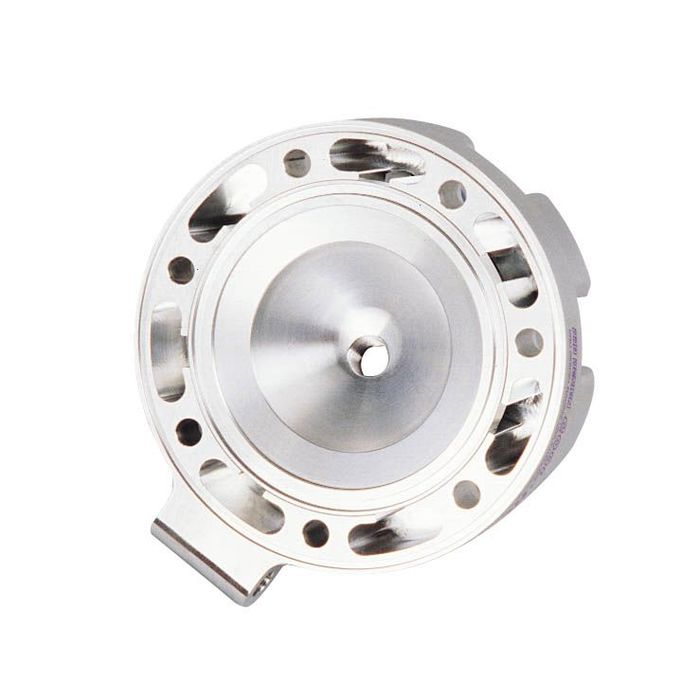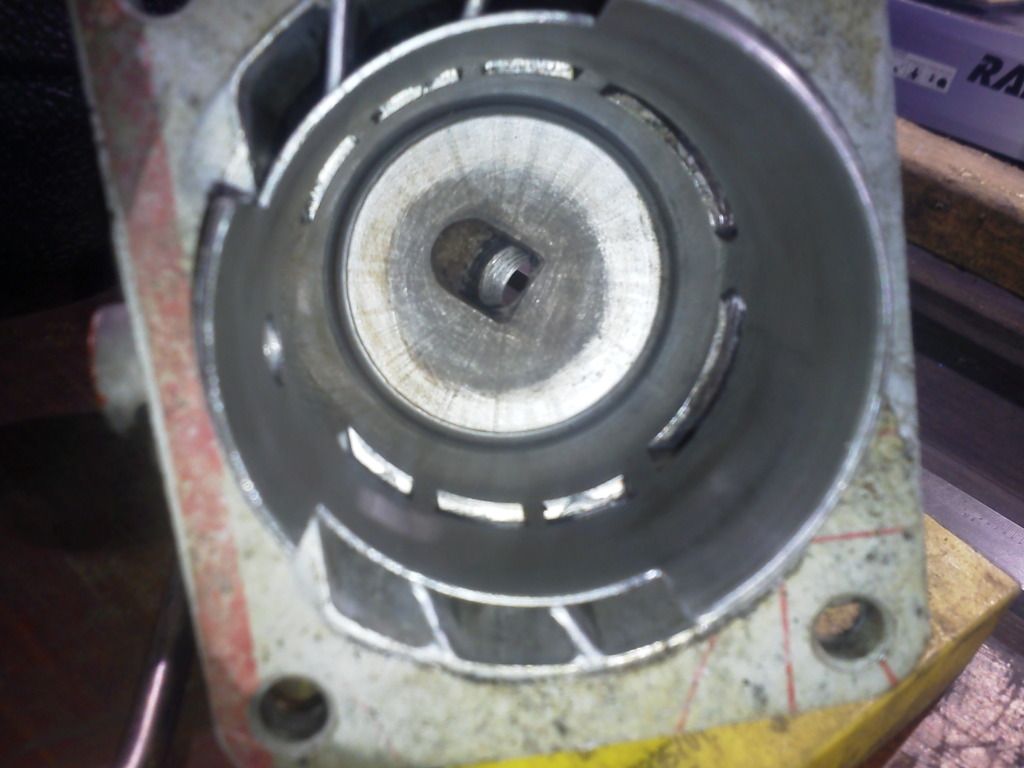Nearly every saw I've seen has a taper in the squishband, where it is tightest on the edges. This is an important factor that AM cylinders often miss.
Perhaps even more important than taper is squishband width. A wide squishband consumes power and is best for low RPM operation. A more narrow squishband is ideal for sustained, high RPM applications. This is one reason that I choose not to cut the squishband unless required for other build criteria. A pop-up piston does not alter the built in taper and width of the factory head. To widen the squishband would be to go in the wrong direction, from my point of view. A chainsaw does its work at WOT, at sustained high RPMs, relying on chain speed to do its job. Unless you're going to build a custom 2-piece head, I find it more efficient to leave the head stock and to use a pop-up piston for compression increase. There are more reasons, but this one is most pertinent to this discussion.
Perhaps even more important than taper is squishband width. A wide squishband consumes power and is best for low RPM operation. A more narrow squishband is ideal for sustained, high RPM applications. This is one reason that I choose not to cut the squishband unless required for other build criteria. A pop-up piston does not alter the built in taper and width of the factory head. To widen the squishband would be to go in the wrong direction, from my point of view. A chainsaw does its work at WOT, at sustained high RPMs, relying on chain speed to do its job. Unless you're going to build a custom 2-piece head, I find it more efficient to leave the head stock and to use a pop-up piston for compression increase. There are more reasons, but this one is most pertinent to this discussion.

























































